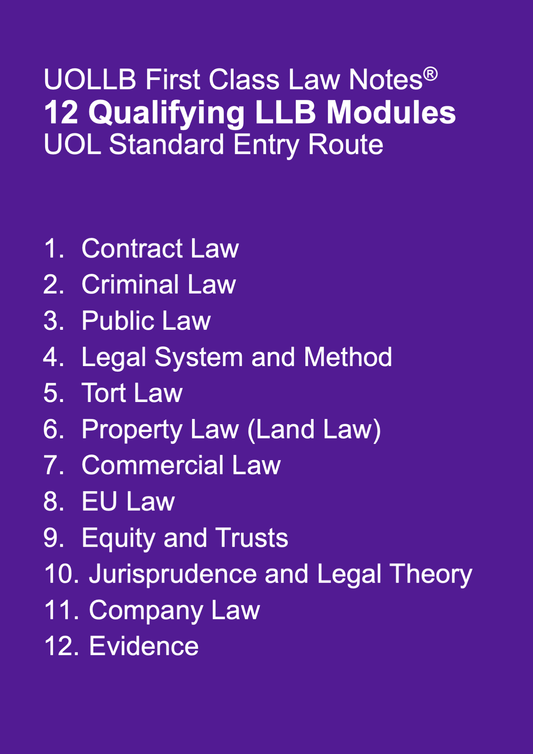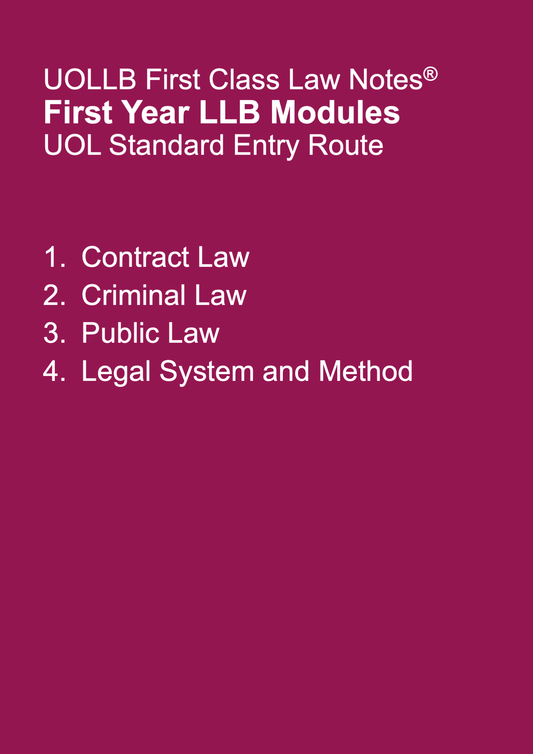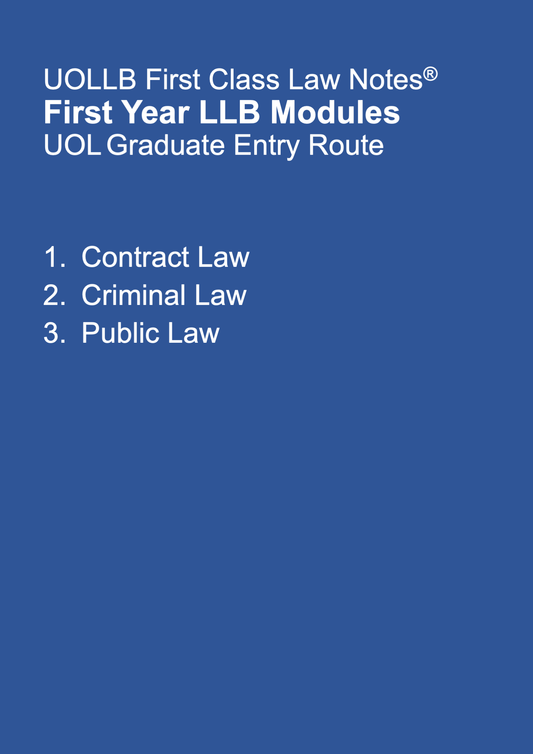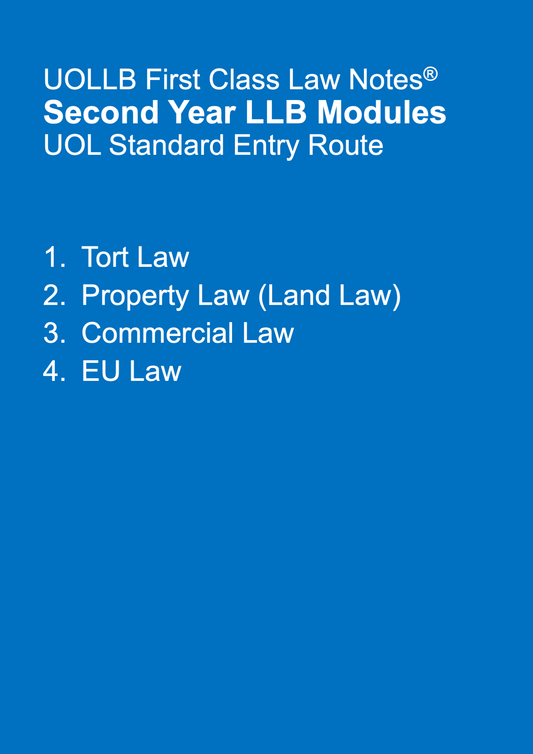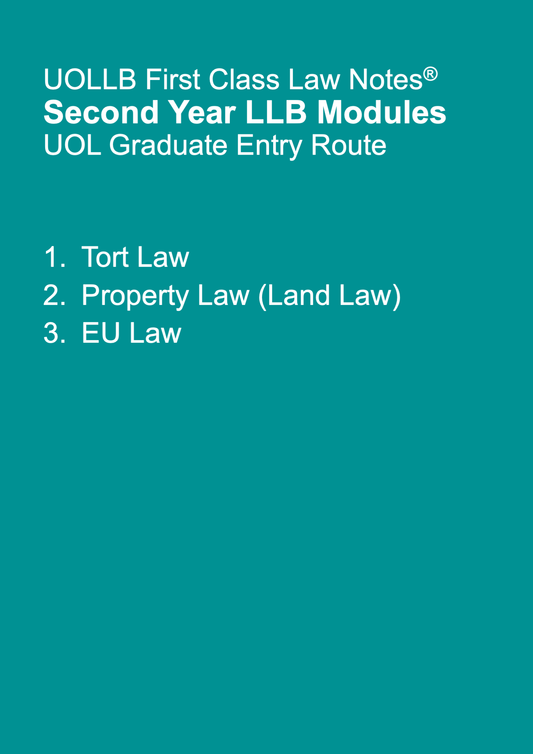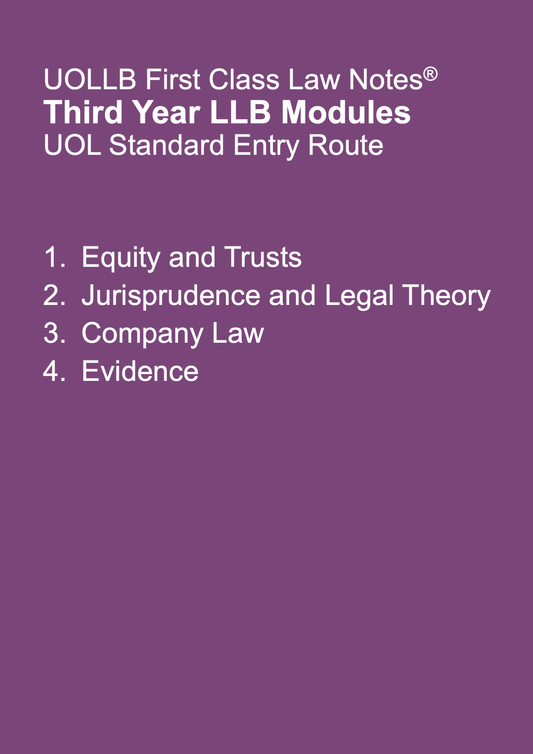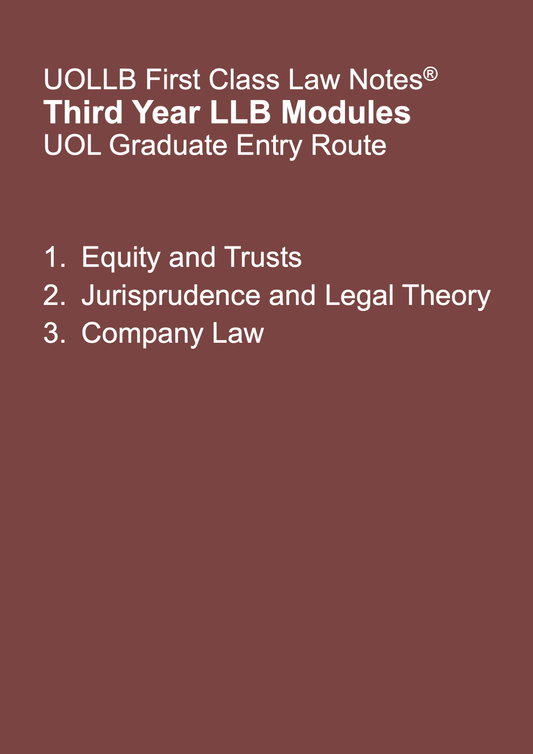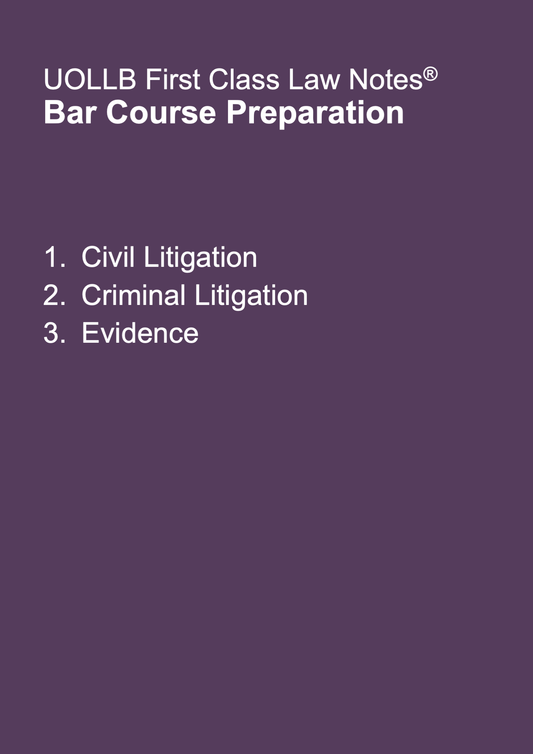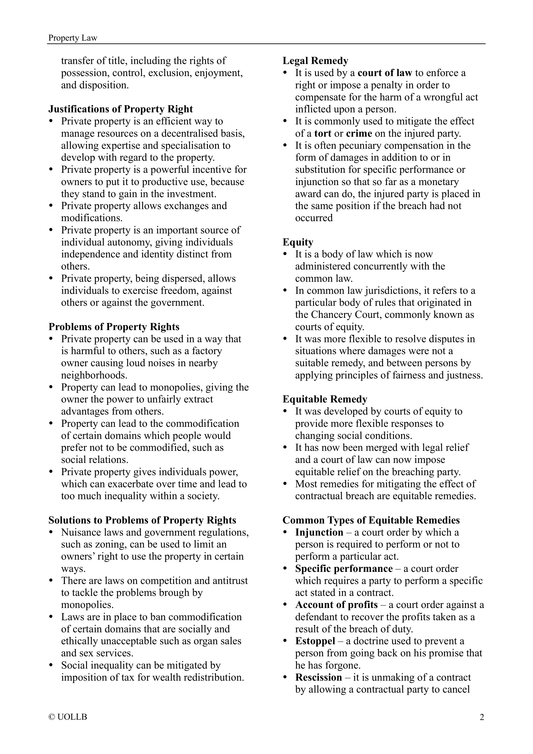Collection: Law Notes
Our high-performance law notes are suitable for anyone studying common law at any university or preparing for law exams, including LLB, UOL, PGDL, GDL, LPC, LLM, MA Law, MLaw, CPQ and SQE. All difficult legal concepts are turned into digestible bullet points, arranged in a memorable sequence, and supported by case law and statute law. You will learn more efficiently from our law notes than from your textbooks or subject guides. Get an unparalleled advantage over your peers in law exams before it is too late.
-
All 30 Law Modules (Best Value)
Regular price £129.99 GBPRegular priceUnit price / per£457.61 GBPSale price £129.99 GBPSale -
All 18 UOL Modules (UOL International Programme)
Regular price £109.99 GBPRegular priceUnit price / per£259.76 GBPSale price £109.99 GBPSale -
SQE Foundation Package
Regular price £89.99 GBPRegular priceUnit price / per£215.78 GBPSale price £89.99 GBPSale -
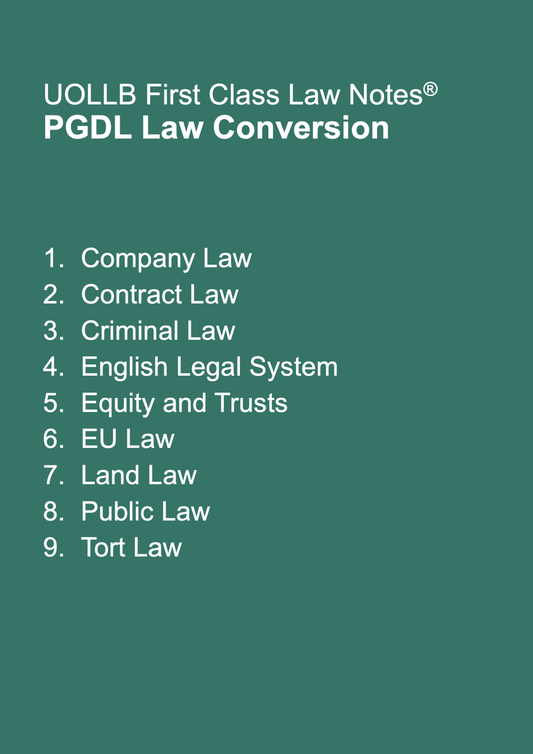
 Sale
SalePGDL Law Conversion
Regular price £89.99 GBPRegular priceUnit price / per£159.83 GBPSale price £89.99 GBPSale -
12 Qualifying LLB Modules (UOL Standard Entry Route)
Regular price £99.99 GBPRegular priceUnit price / per£201.80 GBPSale price £99.99 GBPSale -
9 Qualifying LLB Modules (UOL Graduate Entry Route)
Regular price £99.99 GBPRegular priceUnit price / per£159.83 GBPSale price £99.99 GBPSale -
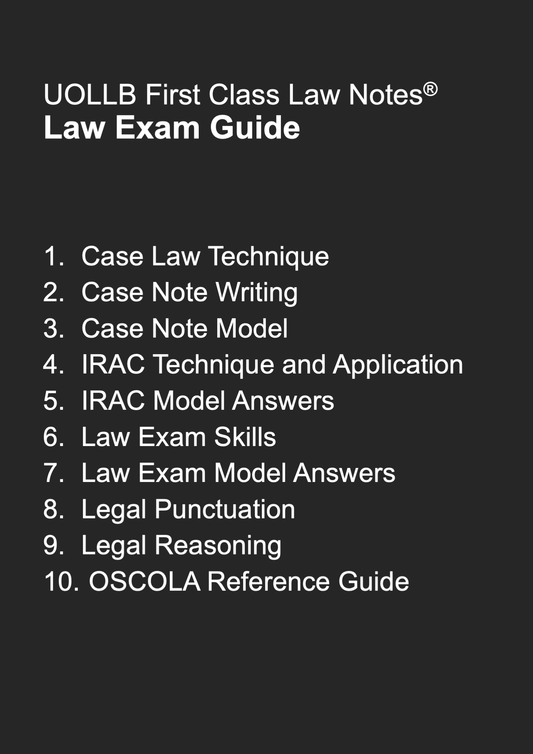
 Sale
SaleLaw Exam Guide
Regular price £19.99 GBPRegular priceUnit price / per£33.92 GBPSale price £19.99 GBPSale -
First Year LLB Modules (UOL Standard Entry Route)
Regular price £49.99 GBPRegular priceUnit price / per£89.88 GBPSale price £49.99 GBPSale -
First Year LLB Modules (UOL Graduate Entry Route)
Regular price £39.99 GBPRegular priceUnit price / per£75.89 GBPSale price £39.99 GBPSale -
Second Year LLB Modules (UOL Standard Entry Route)
Regular price £49.99 GBPRegular priceUnit price / per£89.88 GBPSale price £49.99 GBPSale -
Second Year LLB Modules (UOL Graduate Entry Route)
Regular price £39.99 GBPRegular priceUnit price / per£75.89 GBPSale price £39.99 GBPSale -
Third Year LLB Modules (UOL Standard Entry Route)
Regular price £49.99 GBPRegular priceUnit price / per£89.88 GBPSale price £49.99 GBPSale -
Third Year LLB Modules (UOL Graduate Entry Route)
Regular price £39.99 GBPRegular priceUnit price / per£75.89 GBPSale price £39.99 GBPSale -
Legal English and Writing
Regular price £15.99 GBPRegular priceUnit price / per£44.85 GBPSale price £15.99 GBPSale -
SQE Question Bank (SQE1 Mock Exam)
Regular price £29.99 GBPRegular priceUnit price / per -
Contract Law
Regular price £13.99 GBPRegular priceUnit price / per -
Criminal Law
Regular price £13.99 GBPRegular priceUnit price / per -
Public Law
Regular price £13.99 GBPRegular priceUnit price / per -
Legal System and Method
Regular price £13.99 GBPRegular priceUnit price / per£18.97 GBPSale price £13.99 GBPSale -

 Sale
SaleLLM Study Package
Regular price £89.99 GBPRegular priceUnit price / per£173.82 GBPSale price £89.99 GBPSale -

 Sale
SaleMA Law Conversion
Regular price £99.99 GBPRegular priceUnit price / per£206.78 GBPSale price £99.99 GBPSale -

 Sale
SaleMLaw Study Package
Regular price £99.99 GBPRegular priceUnit price / per£220.77 GBPSale price £99.99 GBPSale -

 Sale
SaleLPC Study Package
Regular price £89.99 GBPRegular priceUnit price / per£159.83 GBPSale price £89.99 GBPSale -
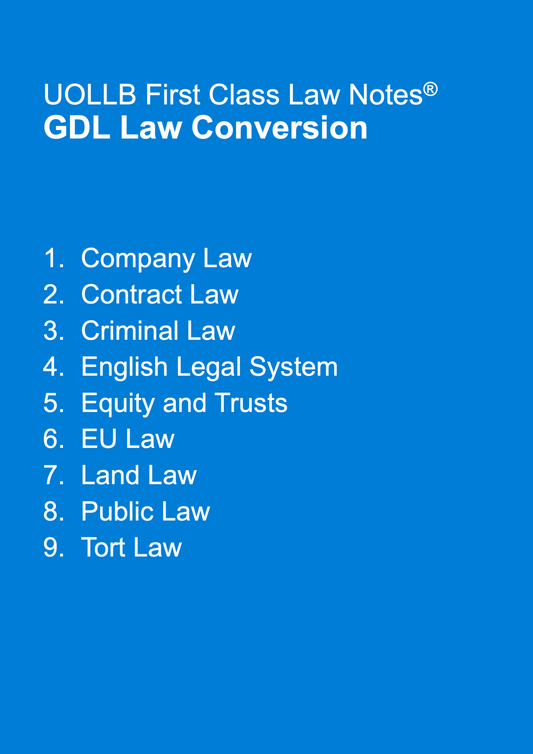
 Sale
SaleGDL Law Conversion
Regular price £89.99 GBPRegular priceUnit price / per£159.83 GBPSale price £89.99 GBPSale -
GradDip International Law (UOL International Programme)
Regular price £49.99 GBPRegular priceUnit price / per£89.88 GBPSale price £49.99 GBPSale -
GradDip Commercial Law (UOL International Programme)
Regular price £59.99 GBPRegular priceUnit price / per£103.87 GBPSale price £59.99 GBPSale -
Bar Course Preparation
Regular price £29.99 GBPRegular priceUnit price / per£41.97 GBPSale price £29.99 GBPSale -

 Sale
SaleCPQ Study Package
Regular price £99.99 GBPRegular priceUnit price / per£229.78 GBPSale price £99.99 GBPSale -
CertHE Common Law (UOL International Programme)
Regular price £49.99 GBPRegular priceUnit price / per£89.88 GBPSale price £49.99 GBPSale -
UOL International Foundation Programme (IFP)
Regular price £19.99 GBPRegular priceUnit price / per£42.99 GBPSale price £19.99 GBPSale -
Law Exam Model Answers
Regular price £9.99 GBPRegular priceUnit price / per -
Law Exam Skills
Regular price £9.99 GBPRegular priceUnit price / per -
Property Law
Regular price £13.99 GBPRegular priceUnit price / per -
Commercial Law
Regular price £13.99 GBPRegular priceUnit price / per

UOL Case Bank
Upon joining, you become a valuable UOL student and gain instant access to over 2,100 case summaries. UOL Case Bank is constantly expanding. Speed up your revision with us now.
Where are our students from?
Yale University
Council of Europe
Baker Mckenzie
University of Chicago
Columbia University
New York University
University of Michigan
INSEAD
University College London (UCL)
London School of Economics (LSE)
King’s College London (KCL)
University of London
University of Manchester
University of Zurich
University of York
Brandeis University
University of Exeter
University of Sheffield
Boston University
University of Washington
University of Leeds
University of Law
Royal Holloway, University of London
Birkbeck, University of London
SOAS, University of London
University of Kent
University of Hull
Queen’s University Belfast
Toronto Metropolitan University
Hong Kong University of Science and Technology
University of Buckingham
ESSEC Business School
Your perfect companion for open-book and closed-book exams
-

Diagrams and Charts
Our carefully designed diagrams and charts will guide you through complex legal issues.
-
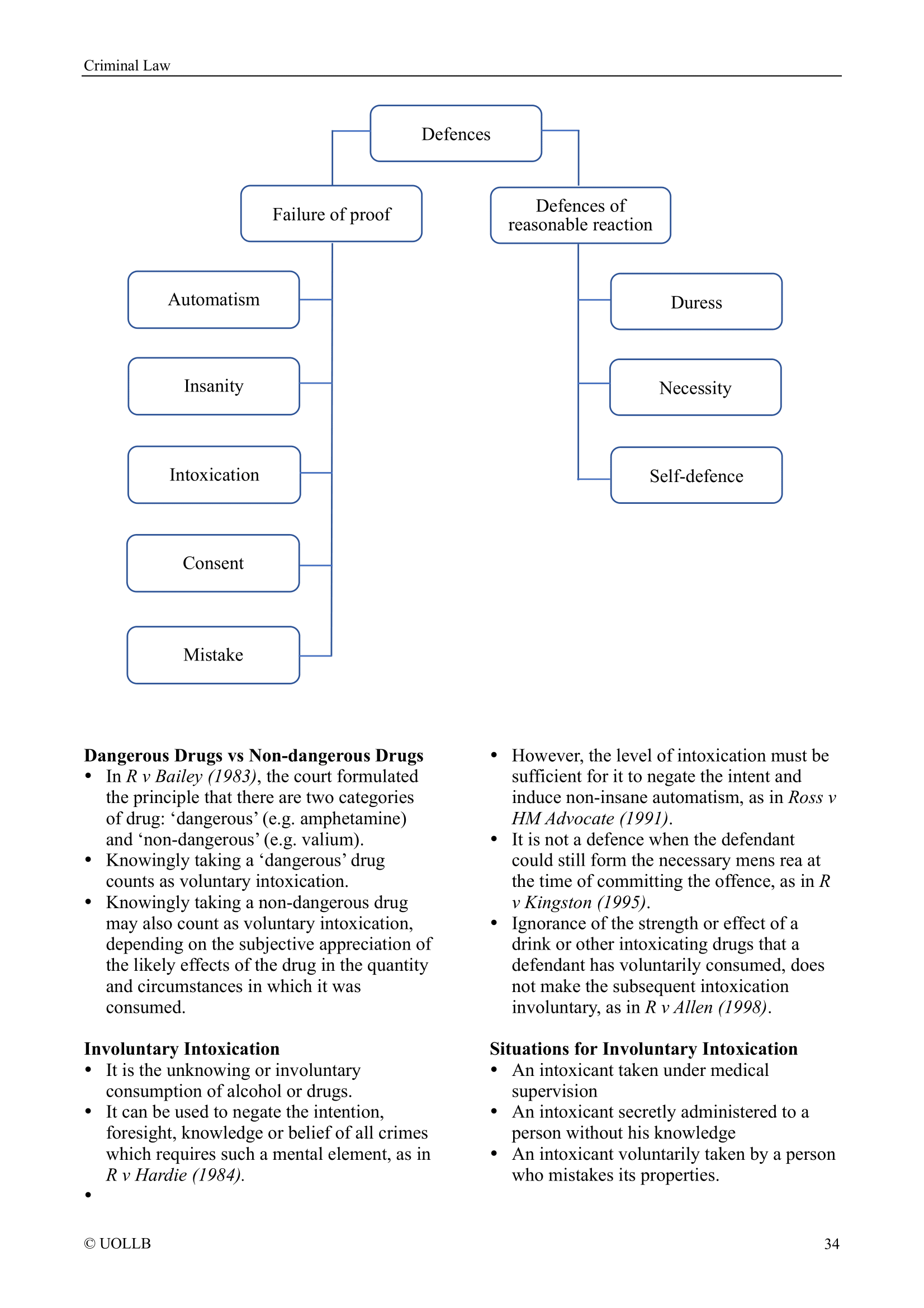
Clear and Succinct Definitions
Key concepts are concisely defined to help you understand legal topics quickly.
-

Statutory Provisions
Statutory provisions are provided side by side with legal concepts to help you swiftly locate the relevant legislation.
-
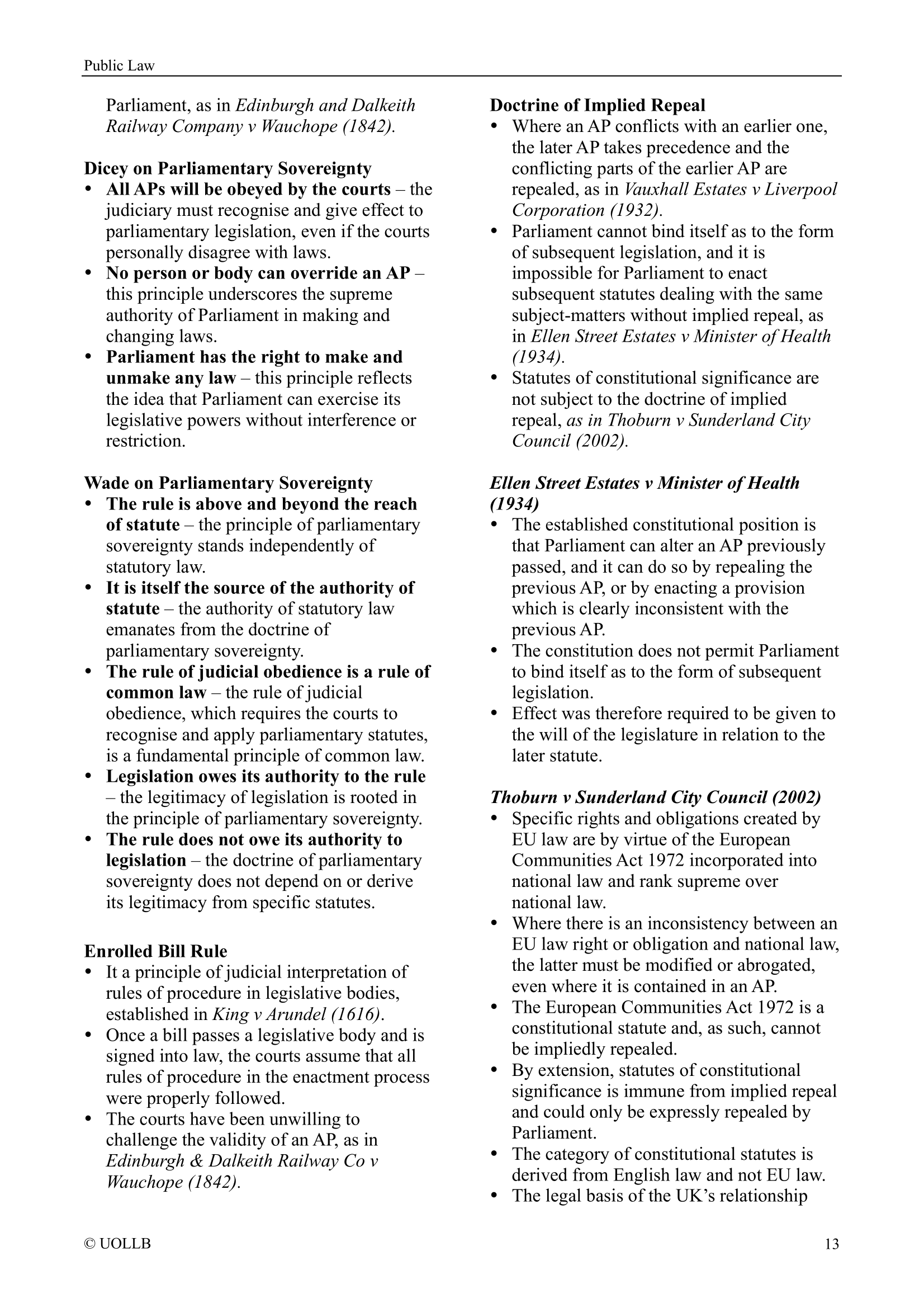
Case Summaries
We have summarised important cases for you so that you don't need to read long and boring cases.
-
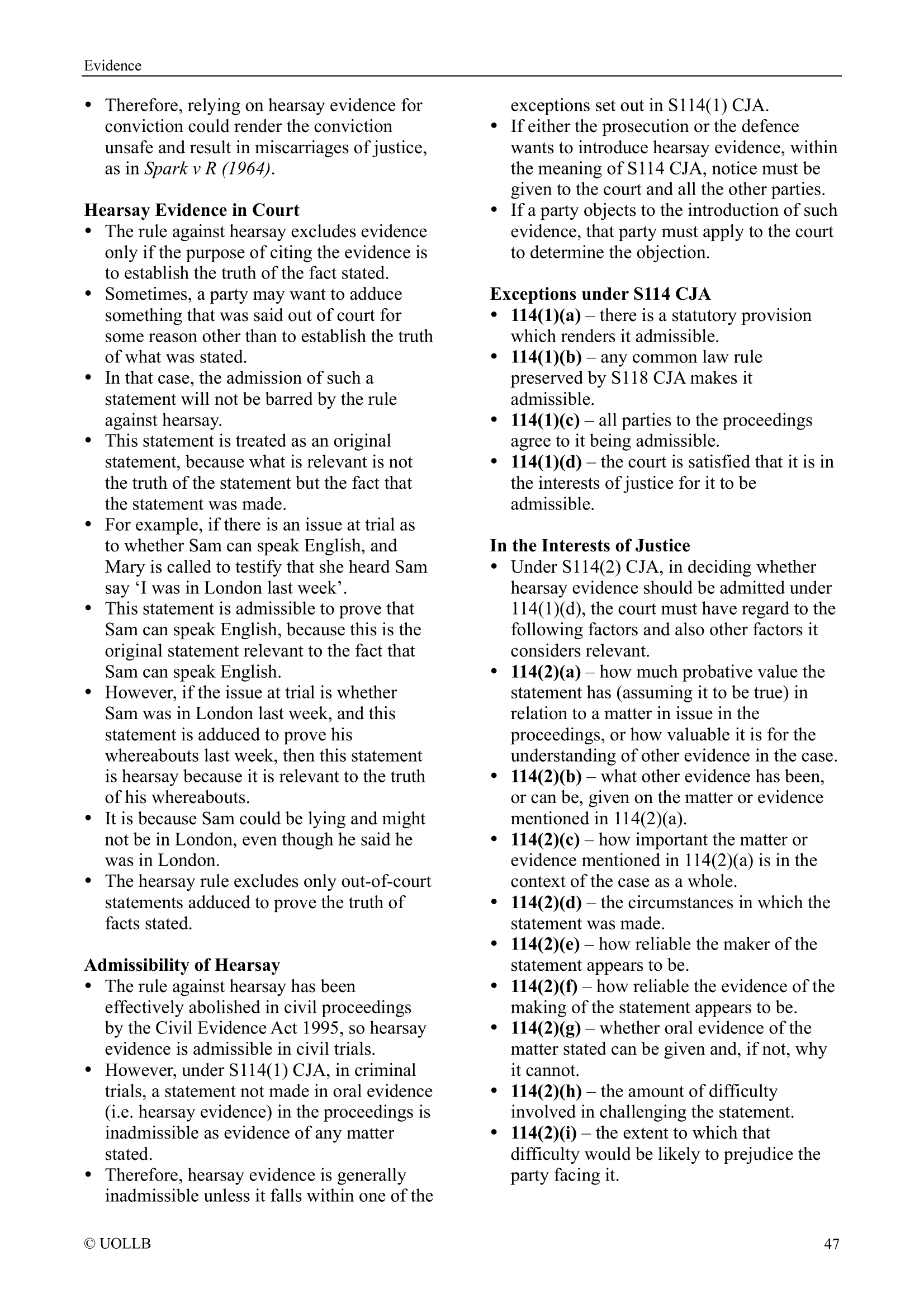
Rules and Exceptions
Rules and exceptions are clearly listed so that you know when a rule applies and when it doesn't.
-
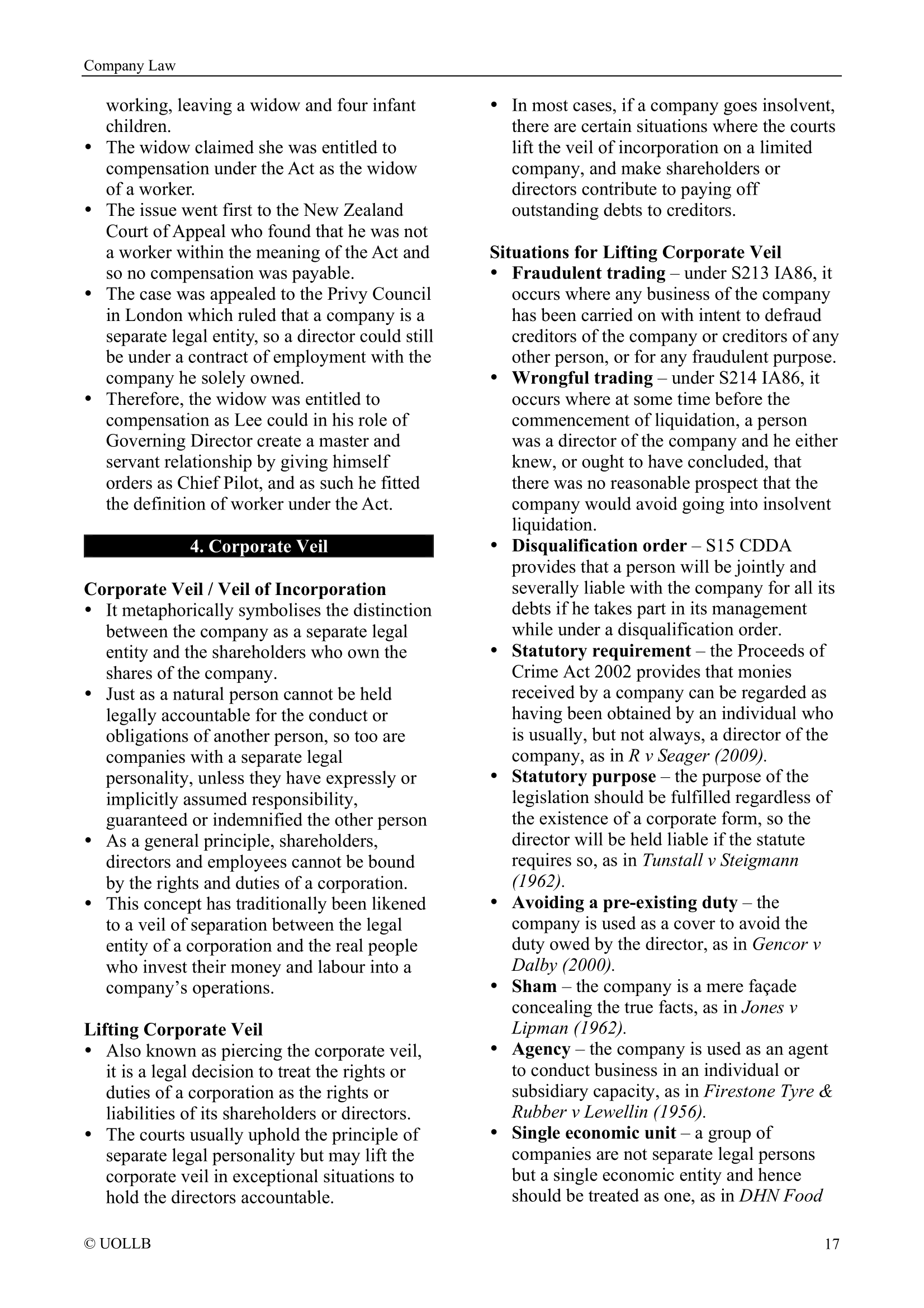
Terminology
Legal terms and key concepts are explained at the beginning of each chapter to help you learn efficiently.
-
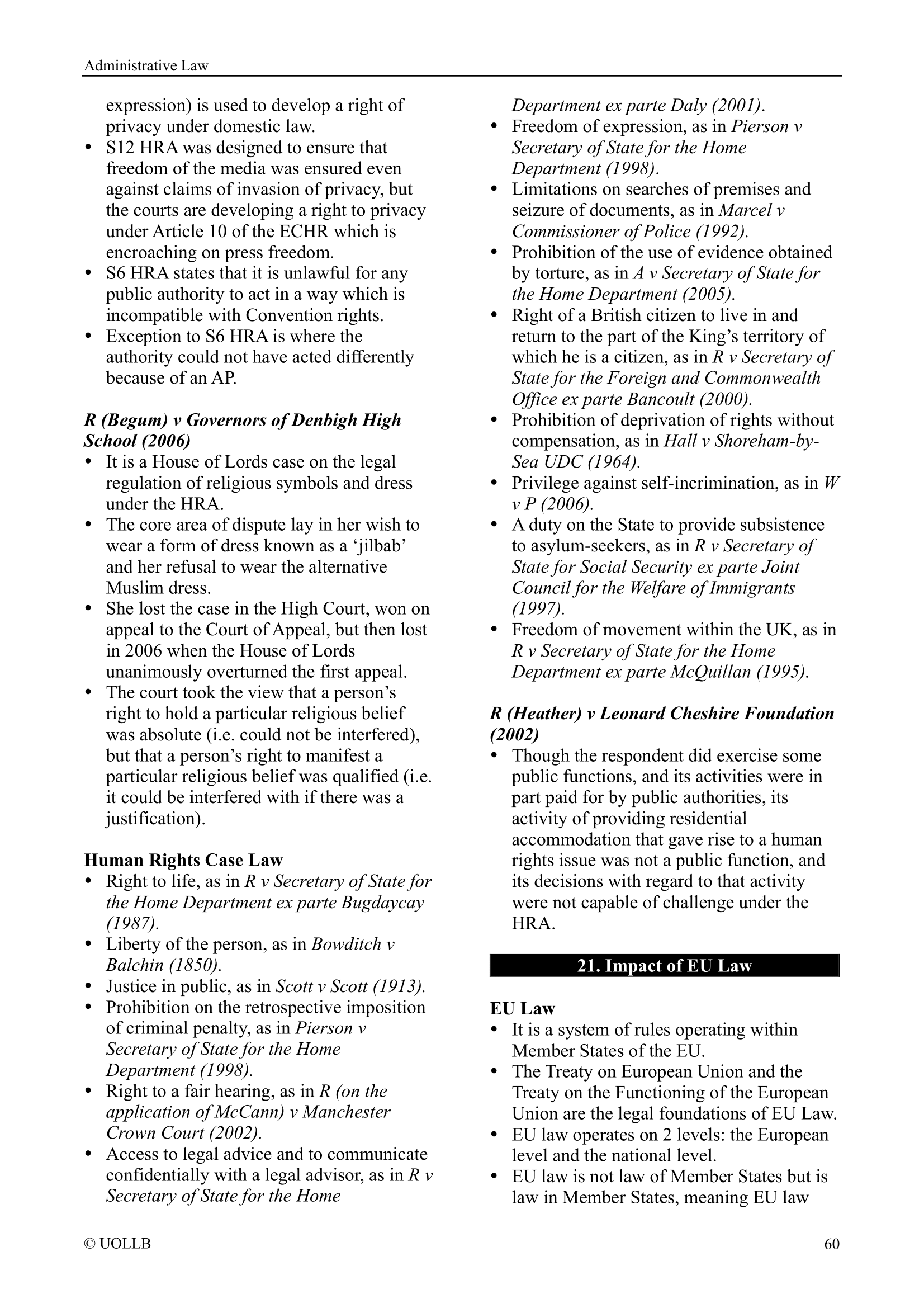
Case Law
Case law is provided side by side with legal concepts so that you know how legal principles and precedents were established.
-

Law Essay Guide
You will learn essential law exam skills and essay writing techniques that are not taught in class.
-
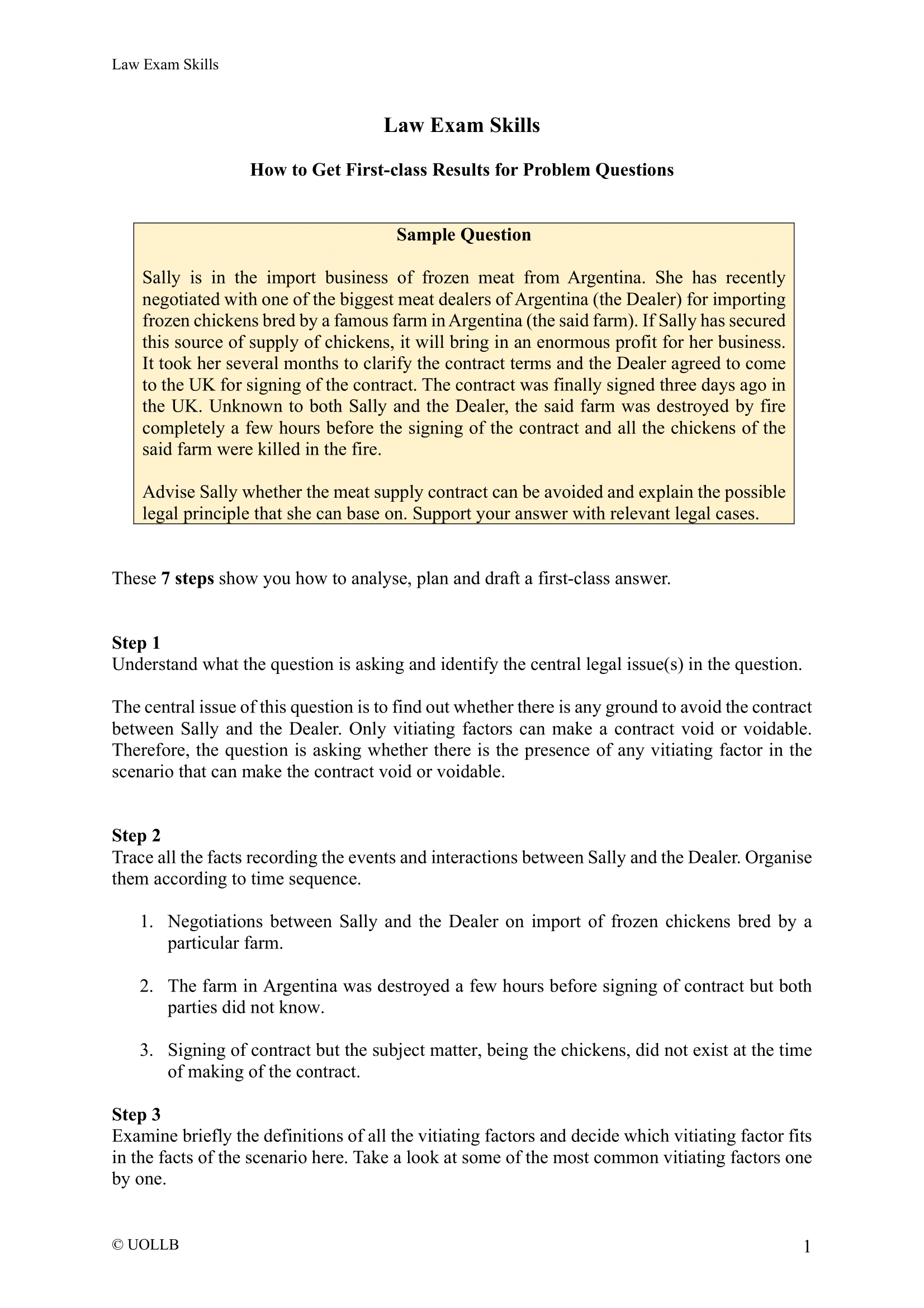
Problem Question Guide
We will show you how to answer problem questions step by step to achieve first-class results.
-

Structured Explanations
Complex legal concepts are broken down into concise and digestible bullet point explanations.
-
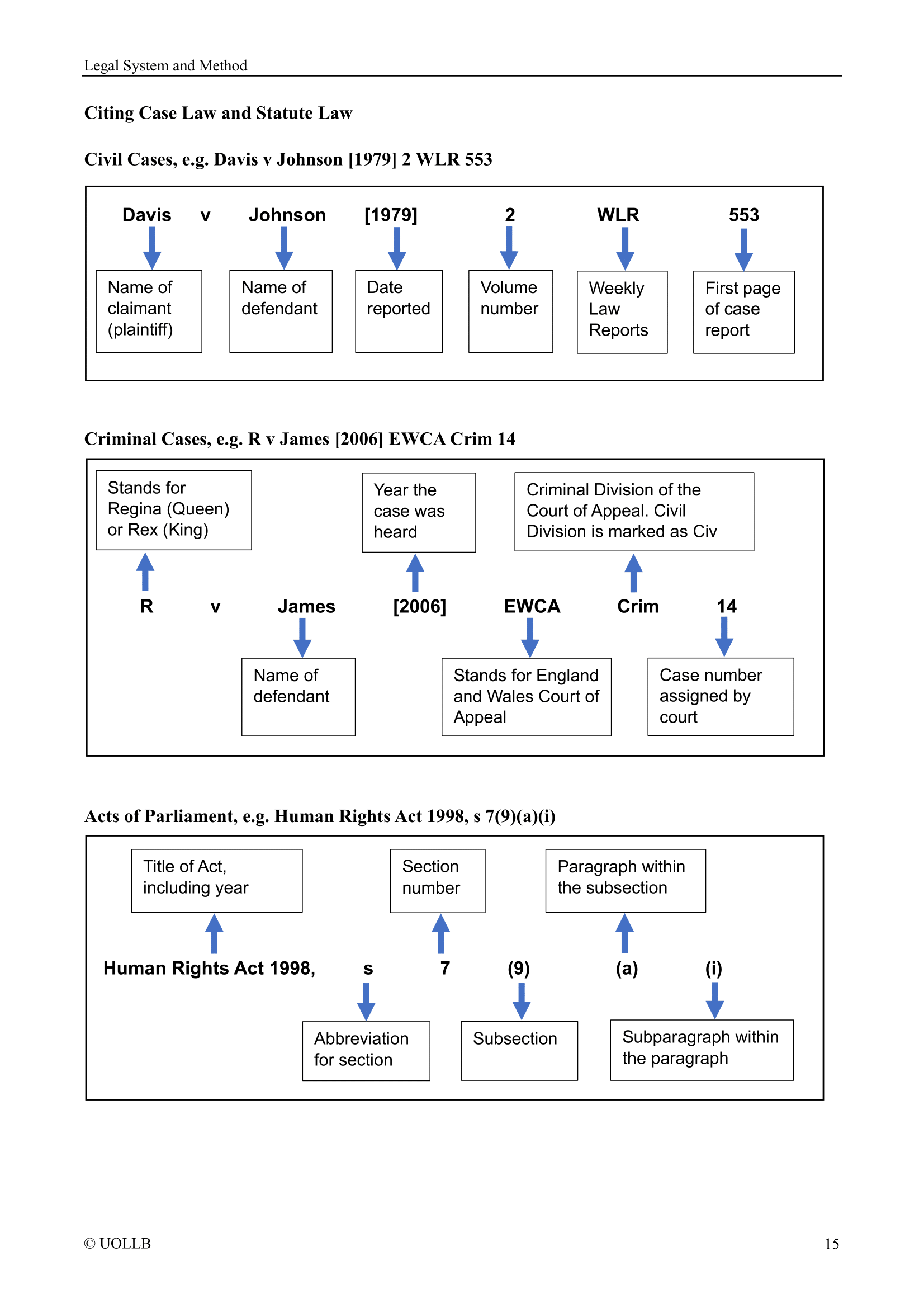
Legal Research
You will learn legal research techniques with our study guide and become a proficient legal researcher.
-

Exam-focused
All essential concepts, principles, and case law are included so that you can answer exam questions quickly.
Let customers speak for us
from 2 reviewsThe information is effectively presented. The notes are very succinct for efficiently learning. I would like to recommend UOLLB to all law students.

I opine that the UOLLB Employment Law notes are an excellent work for all intending users.
I purchased the set of "Al 26 UOLLB Notes in October,2023" for my daughter who is a student at UWE Bristol.These notes have greatly helped her in her 1st Year Studies.As I said last year, the UOLLB Notes are a great resource not only to students of law but law practitioners as well as they are a very handy source of legal knowledge even for subjects one did not or is not studying.
I will send you the email where you sent me already downloaded notes.Can I benefit from the offer to upgrade these notes with the 2024 revised version thereof ?
Kind regards,
Titus W. Mulindwa
Deputy Legal Counsel
Bank of Uganda
[****]
[****]
[****] (WhatsApp number).








